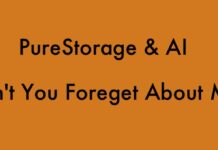The DNA Data Storage Alliance has joined the Storage Networking Industry Association (SNIA) as a Technology Affiliate to begin technical work and standards development, and speed the development of an interoperable ecosystem, for DNA data storage.
The DNA Data Storage Alliance group was formed in 2020 by Illumina, Microsoft, Twist Bioscience Corporation and Western Digital. These four suggest DNA storage can deliver low-cost, high-density archival storage, with 10 full length digital movies fitting into a volume the size of a single grain of salt. Another example; the volume of space inside an LTO tape cartridge is estimated to hold 100,000 times the number of DNA-bits as an LTO-9 tape in that same cartridge.
Steffen Hellmold, senior veep for Business Development, DNA Data Storage, at Twist Bioscience, issued a quote: “Joining SNIA as a Technology Affiliate is taking DNA to the big stage, signaling a maturity of DNA data storage technology and the fact that it is now ready for the next phase of the market evolution. Now is the time to build on the growing momentum and scale up the ecosystem to service the projected data storage demand within this decade.”

SNI exec director Michael Oro sang off the same hymn sheet: “Industry work on standards development is a pivotal moment for new technologies. It is the key indicator for multi-vendor investment and support for the technology. This critical step assures adopters of the technology to have broad choice of innovative and interoperable multi-party solutions.”
DNA data storage encodes binary data (base 2 numbering scheme) into a 4-element coding scheme using the four DNA nucleic acid bases: adenine (A), guanine (G), cytosine (C) and thymine (T). For example, 00 = A, 01 = C, 10 = G and 11 = T. This transformed data is encoded into short DNA fragments and packed inside some kind of container, such as a glass bead, for preservation. One gram of DNA can theoretically store almost a zettabyte of digital data – one trillion gigabytes. Such fragments can be read in a DNA sequencing operation. They are tiny and can theoretically last for thousands of years or more.

The DNA Storage Alliance Technology Affiliate will aim to standardize interfaces, methods, and best practices to create a global interoperable ecosystem from which both solution providers and clients will benefit. A technical group will develop physical standards, logical and software standards and quality standards to ensure the customers get the best systems.
Check out the DNA Data Storage Alliance website for more information.








